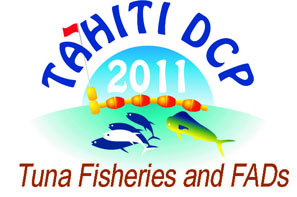Species composition and diversity of fish assemblages associated to anchored FADs in the Western Indian Ocean
1 : South African Institute of Aquatic Biodiversity
(SAIAB)
Privite Bag 1015 Grahamstown 6140 South Africa -
Afrique du Sud
2 : Department of Ichthyology and Fisheries Science
(DIFS)
Rhodes University Grahamstown 6140 -
Afrique du Sud
3 : Institut de Recherche pour le Developement
(IRD)
Seychelles Fishing Authority Fishing Port Victoria -
Seychelles
4 : Institut de Recherche pour le Développement
(IRD)
UMR 212
Av. J. Monnet, 34203, Sete -
France
5 : Université de Monpellier 2
(UM2)
université montpellier 2, université montpellier 2
Place Eugène Bataillon 34095 Montpellier cedex 5 -
France
6 : Seychelles Fishing Authority
(SFA)
Fishing Port Victoria -
Seychelles
7 : Laboratoire Biotem
Universite de Polynésie Francaise
Université de Polynésie française BP 6570 98702 Faa'a Tahiti -
Polynésie française
8 : South African Institute of Aquatic Biodiversity
(SAIAB)
Privite Bag 1015 Grahamstown 6140 South Africa -
Afrique du Sud
9 : Marine Research Center
(MRC)
H. White Waves Moonlight Higun Malé 20025 -
Maldives
10 : Marine Research Center
(MRC)
H. White Waves Moonlight Higun Malé 20025 -
Maldives
11 : Albion Fisheries Reseach Center
(AFRC)
Ministry of Fisheries Albion Petite Riviere -
Maurice
12 : Albion Fisheries Reseach Center
(AFRC)
Ministry of Fisheries Albion Petite Riviere -
Maurice
13 : Centre Ifremer du Pacifique
(CIP)
IFREMER
BP 7004 - 98719 - Taravao - Tahiti -
Polynésie française
14 : Institut de Recherche pour le Développement
(IRD)
* : Corresponding author
UMR 212
Av. J. Monnet, 34203, Sete -
France
Species composition and diversity of fish assemblages around anchored FADs in the Maldives, Seychelles and Mauritius were investigated using the Underwater Visual Census (UVC) technique. A total of 48 UVCs were performed in all three countries on four selected FADs in each country. A total of 37 species belonging to 20 families were observed during the study in all three countries. The Carengidea family was the most dominant in all three countries with Caranx sexfaciatus, Elagatis bipinnulata and Decapeterus macarellus being the most occurent species. The fish assemblages observed consisted of pelagic fish as well as coral fish species which contributed to the higher species richness observed at certain FADs. Several indices were computed to provide an integrated view of diversity. Overall, the Maldives displayed the highest mean diversity per FAD (e.g. species richness and evenness: Shannon H' = 1.05, SD ± 0.31) followed by the Seychelles (Shannon H' = 0.81, SD ± 0.34) and lowest being in Mauritius (Shannon H' = 0.66, SD ± 0.27). Large variations in species richness of assemblages were observed during the study ranging from 2 to 16 species per observation. A Principal Coordinates Analysis (PCoA) based on Bray-Curtis distances between assemblages suggests a latitudinal effect on their composition and abundances; the Maldives and Mauritius assemblages being the most different, with an intermediate overlap with the Seychelles.

 PDF version
PDF version
